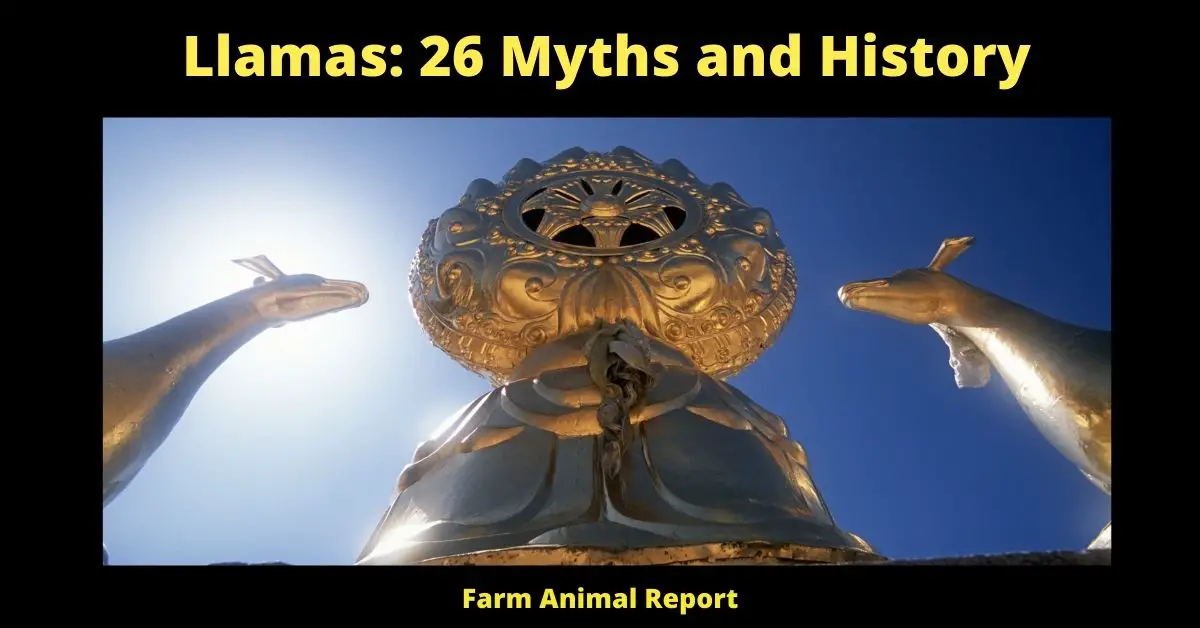26 Inca Gods and Myths about Llamas
In this post, we explore the myths and history of llamas. Llamas come from South America and they can be raised as pack animals or for their fiber. They are often used in tourism to carry tourists up steep hills. But what about llama myths? We explore those too! You will learn about how llamas were domesticated animals by humans over 5,000 years ago and how they came to North America on ships just a few hundred years ago!
Celestial Black Llamas
One of the most interesting llama myths is that black and white llamas are bad luck. The truth? They’re just as lucky as any other color! People who own them say they bring good fortune to those around them, but their owners protect them fiercely from anyone trying to harm or steal these rare animals. Some people believe that if you see a black and white llama in the wild, you should not approach it. Instead, take three steps back and make yourself invisible to avoid its bad luck!
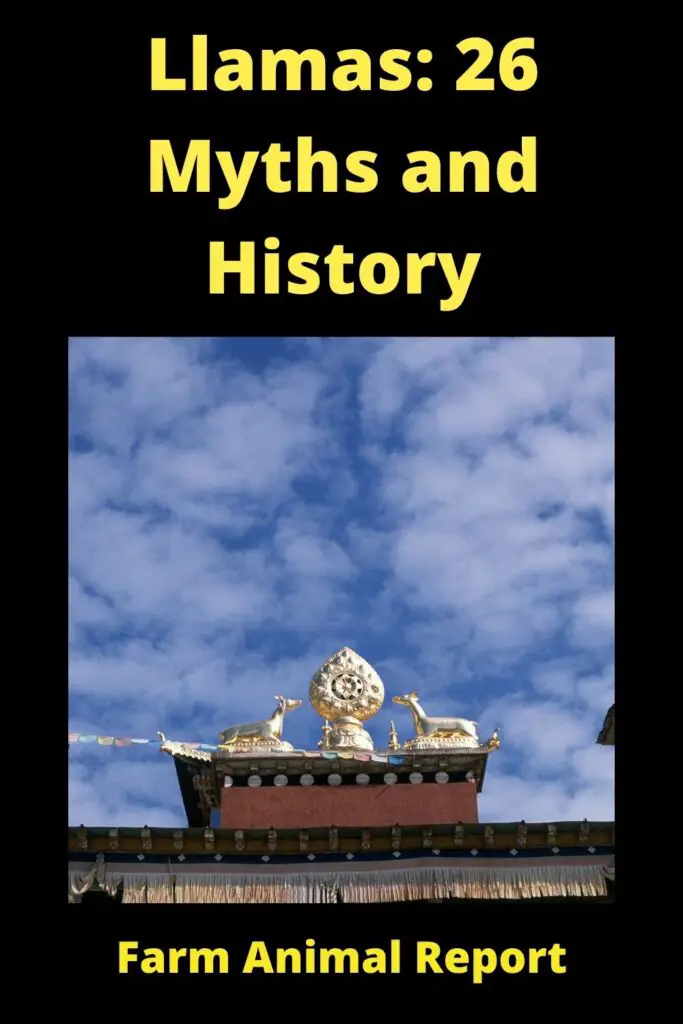
So next time you see a Celestial Black Llamas or any other color of llamas for that matter – don’t worry about their mythological status. They’re just like any other llamas but with a more interesting story.
Black Llamas in Ancient Inca History – Llama Facts
In ancient Inca society, llamas were not just used as pack animals. They also played a role in the sacrificial and burial rituals of those who left this world before us. When an individual died, their family members would take all of their belongings to a designated place where they would burn them so that the gods could have whatever they needed. They would place the llamas in a circle around where they were burning and they would stay there until everything was burned up, including their owners’ bodies!
18 ways Alpaca Farmers make Money
Afterward, everyone who attended this ritual went to mourn for three days at the home of the deceased individual’s family members. The head of the household would begin by slaughtering one young male llama. After this, the family members would collect the blood from that sacrifice and douse themselves with it as a way to mourn their loved one’s passing. The meat was then distributed among everyone who attended the ceremony so they could have something to eat while they were mourning together for those three days.
Finally, after going through all of this, the family members would release their llamas to roam freely in the wild. This was said to be good luck for everyone involved because it meant that llamas were free and happy while also symbolizing a new beginning after mourning someone who had passed away.
Urcuchillay – Multi Colored Llamas / Inca Legends
One of the most interesting Inca myths that still exists today is about a llama known as Urcuchillay. This was believed to be a mythical, multi-colored llama with powers over other animals and the weather. It’s said that this llama would bring storms and bad weather when it felt like there had been too much sun and heat for too long.
The legend of this llama begins with a young boy named Churi who wanted to become an excellent healer like his father. One day, he was walking through the forest when he found something that changed his life forever: Urcuchillay! The llama looked as beautiful as it did dangerous because it had the power to control the weather, so Churi made sure not to get too close.
After he returned home, his father asked him where he had been all day and that’s when Churi told him about this multi-colored llama with powers over nature! His father was skeptical of what happened until some people came into their village saying that their crops had been destroyed by a terrible storm that no one was able to explain because the weather had been beautiful all day.
His father went out into the forest and followed Churi’s tracks until he found Urcuchillay! He realized then how powerful this llama really was, so he brought it back home with him where they kept it in their barn.
After that, Churi’s father took advantage of this llama’s powers by asking it to bring wind and rain for his crops so they could grow well! Then the people who had lost their own crops started coming to him for help too. As time went on, his reputation as a great healer spread throughout the region, and everyone was coming to see him – including the Inca!

Finally, one day an Inca messenger came into their village asking for Churi’s father. He said that the emperor needed someone with his skills as a healer because there had been too much sun and heat for far too long so he wanted help from Urcuchillay!
However, when the messenger saw Urcuchillay he was afraid because it had the power to control the weather. Churi’s father explained that Urcuchillay brought rain and storms for his crops so they could grow well! The Inca bought this explanation and took Churi’s father with him back to Cuzco where he was placed at the emperor’s side to heal him.
Sacrificing Llamas – to Apu Illapu – God of Thunder – Inca Mythology
Sacrificing Llamas to Apu Illapu
The llama was an important animal for the Incas because it provided them with everything they needed – meat, fur, and transportation. Therefore, it became a very valuable sacrifice that had to be treated well throughout its life so it would continue providing.
When someone died in the Inca Empire, it was believed that their llama would guide them to the afterlife. After they died, a ceremony called capacocha was performed where an animal – usually a llama or alpaca- was sacrificed in honor of them and then left for birds to eat.
The sacrifice ritual didn’t just happen with people though; it also happened with llamas when they were in trouble. For example, if there was a drought or the weather had been too hot for an extended period of time, it was believed that Apu Illapu – god of thunder- wasn’t happy and wanted to be appeased by sacrifices in his name! The llama would be sacrificed then left for birds to eat as a way of giving back to the god.
An important part about this ritual was that it had to be done during a lightning storm, so people would set out in search of one and when they found one they’d try their best not to get struck by lighting while performing these sacrifices! However, sometimes accidents happened which is why people were told not to bother Apu Illapu when he was busy.
If a person did get struck by lightning, they would be considered cursed and treated as an outcast because it meant that the god of thunder hated them! This is where llamas came in; if someone got hit then their family had to offer up one of their llamas in order to please the god.
If that didn’t work, they would have to offer up a human sacrifice! That’s why when someone was struck with lightning it meant so much because not only did you lose one of your loved ones but also lost all chances at making things right again. It really shows how important the llama was to the Inca people!
The Heavenly Llama
The history behind the heavenly llama is steeped in mystery because there are no written records to go by. However, it is believed that llamas were first thought of as heavenly animals when the Incas saw them silhouetted against the sky at night!
Llamas also had other connections with stars and constellations throughout their history like how people used to think that llama hair showed the dark spots of constellations.
People also believed that llamas were placed in the sky by Viracocha – creator god- to symbolize his creation! The Milky Way was thought to be a path made by these heavenly animals so they could cross into heaven, which is why there are many myths about how it came to be.
In one myth, a llama was tired of carrying its load and stopped to rest on the Milky Way. Viracocha saw this as an opportunity to test his creation by seeing if they could get past without having the animal move! When he found out that people were trying to make it easier for them, he became angry with them and sent down a llama to earth as punishment!
Another myth says that two children were playing by the Milky Way when their ball fell into it. They tried to get it back but couldn’t, so they asked Viracocha for help because he was known for being helpful in these kinds of situations. He told them that if they got a llama to cross the Milky Way then he would give them their ball back. They did, and once they got it back Viracocha turned all three of them into stars!
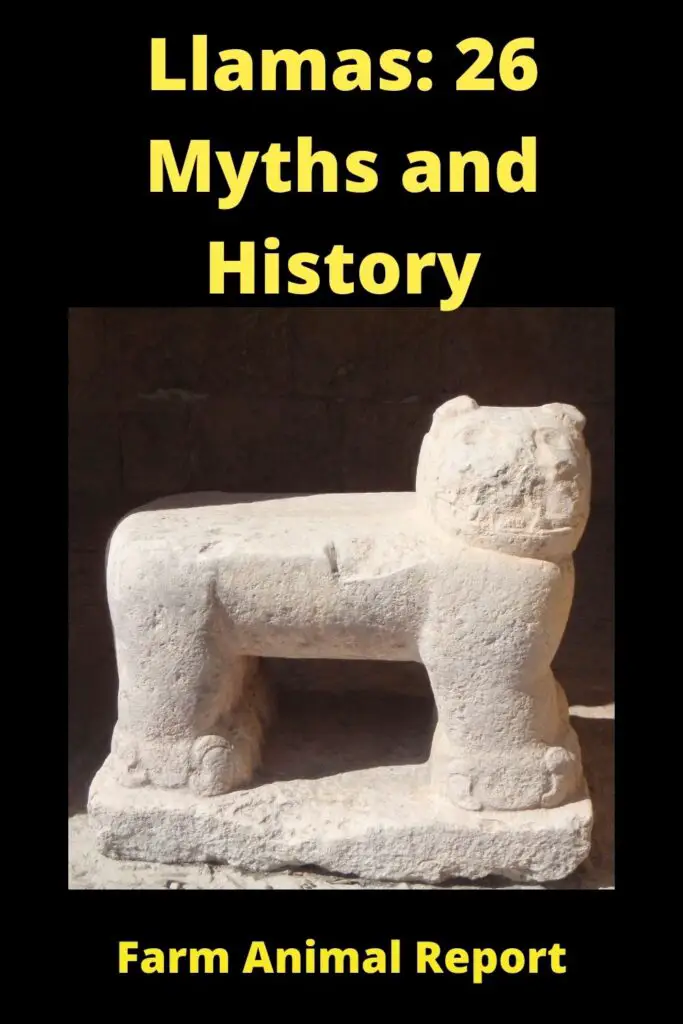
Llamas are also thought to be responsible for creating rainbows because in one story there was a big drought but when the heavenly llamas moved across the Milky Way it caused a rainbow to appear and give the people much-needed water!
In another story, llamas were used as an offering when asking for rain from Apu Illapu. In order to get his attention though, they had to walk across the Milky Way because that’s how he got around too! When lightning struck at the same time, it became the new path for llamas to go across.
The Milky Way has many more stories behind it too like how at one point in history people thought that these animals were actually humans! They eventually realized their mistake but kept some of the folklore about them by saying they came from heaven and had a special connection with stars because they were honored so much.
Myth of Yacana
The background of the myth of Yacana is actually a story about llamas! In the beginning, there were two brothers and one sister who had to go up Mount Yerupaja in order to get supplies for their father. It was dangerous because they would have to cross over rivers while carrying all this stuff on their backs without hurting themselves or dropping anything along the way.
When they finally arrived, the brother and sister were so tired that their father decided to teach them a lesson by throwing llama dung at them! He thought this would force them to learn how strong they really were but it ended up being much more than just a challenge because llamas started raining from the sky! In order for them to stop, the father made a sacrifice of llamas and alpacas in order for them to go away.
The moral behind this story is that people should not underestimate themselves because they are stronger than they think! It also shows how much llamas were respected by ancient cultures like the Inca who thought that even their dung was worth something.
Myth of the Milky Way
The myth of the Milky Way is thought to have started when llamas were first domesticated by people! The Inca saw them as a symbol for their strength and endurance so they would use these animals in many ways. One way that they honored them was by thinking that llama hair showed all the dark spots that the stars made in the sky.
This is why they thought llamas were responsible for creating rainbows because their bodies would block out some of the spots when crossing paths with them! When lightning struck, it was said to be a new path for these animals so they could cross smoothly without causing any harm or getting themselves dirty.
The History of the Golden Llama -Inca Mountain God.
-Llamas were used as a form of currency and for trading.
-Used in order to get things they needed from the gods by sacrificing llamas and alpacas.
–“Tunqu“, which is made up of gold dust, was also sometimes traded with llamas instead of money because it was thought to be more valuable.
The Inca Mountain God -God of the sky, thunder, lightning, and rain.
-People were so afraid of him that they never even said his name out loud! They would just say “illapa” which meant something like lighting or thunder in Spanish.
The History of the Inca Mountain God -Inca people thought that llamas were the perfect animal because they could carry heavy loads and still be able to walk over a long distance without getting tired.
-This is why they used them as a way of trading with other civilizations so they would have more things to offer their gods in order for it all to work out smoothly.
–One of these civilizations was the Colla people who were known to be great warriors and hunters. They would sometimes give llamas as a way to pay tribute or in return for favors because they respected them just like everybody else did back then!
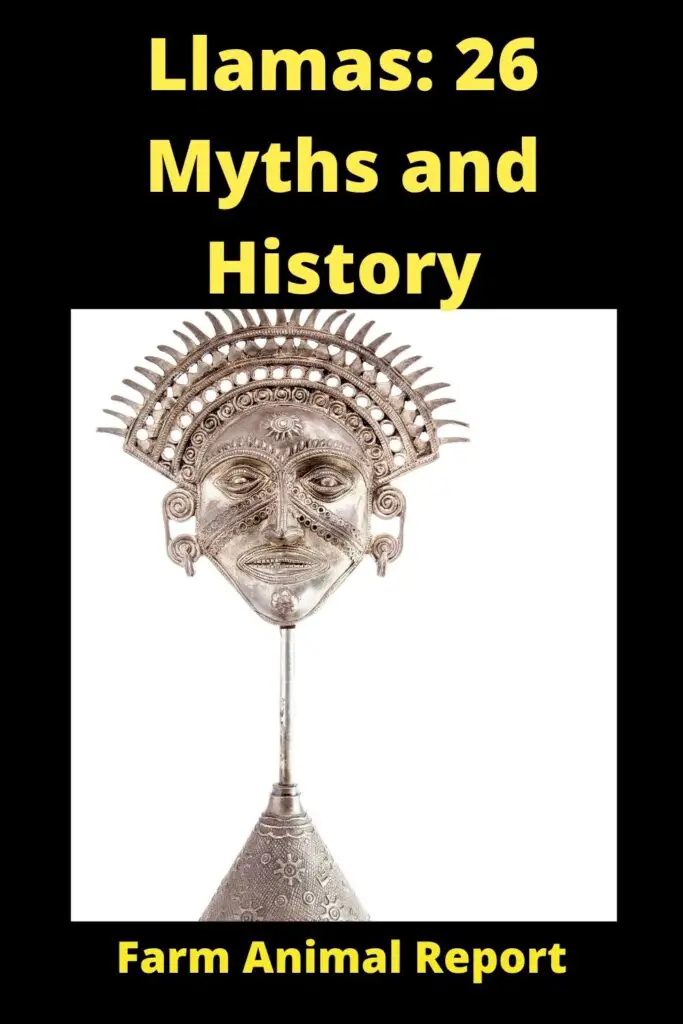
-The Incas soon realized that this was actually more beneficial than using money so it became their new form of currency.
-Inca people also thought that llamas were a sign of fertility and strength because they would use them in order to get things from their gods! They did this by sacrificing llamas but only if the animals could be used for something else first like trading or carrying things around. This is why alpacas became another form of currency as well!
Inca Gods Associated With Llamas
Urcuchillay was a god worshiped by Incan herders
.-He was associated with the llama and the harvest.
-People would sacrifice their best alpacas to him in order for a successful crop!
1) Urcuchillay -God of fertility, medicine, and harvests.
2) “Mallqui” which means “body” or “flesh”.
-People would give llamas and alpacas to him as a sacrifice in order for the crops to grow successfully.
-Only their finest animals were used because they thought that this was necessary in order for it all work out well! For example, if an animal had broken bones or other problems then they believed that Urcuchillay would not accept them and the crops would fail.
-People also thought that llamas were a symbol of strength and fertility, which is why they believed it was necessary to sacrifice them for this god in particular because he represented these things!
3) “llama chakra”, which means “flesh of the earth” or “Earth’s flesh”.
-This is why llamas are associated with the harvest because they would sacrifice them in order to help their crops grow!
4) “Huaraco”, which means “sacred house” or “sacred room”.
-People believed that when a llama was being sacrificed then it was giving its life so that other things could live. This is why they would always do it in a special room or enclosure so that the spirit of the llama could live on forever!
-This belief was also associated with alpacas because people were not willing to risk losing them either in order for their crops to grow successfully.
5) “Llullaillaco” which means “sacred llama”.
-This is a sacred mountain where people would sacrifice both llamas and alpacas. They did this in order to ask for forgiveness from Urcuchillay so that he could help them with whatever they needed!
6) “Chachani” which means “cold one or cold wind.”
-People believed that Urcuchillay lived on top of this mountain because it was cold all year round which is why they would sacrifice llamas to him at the foot of it!
-People also believed that he used these animals as a way to create lightning and thunderstorms in order for them not to lose their crops.
7) “Illapa” which means “the one who controls the weather”.
-He was also considered to be a god of thunder and lightning because he would use llamas as sacrifices in order for this to work out well!
8) “Punchau” which means “young male llama.”
-This is another name that people sometimes used when referring to Urcuchillay because it was a symbol of strength and fertility.
9) “Pachamama” which means “mother earth.”
-People believed that llamas were a sign of this god’s power because they associated them with the Earth!
10) “mallquita”, which can be translated to mean something like “mouth or face”.
-People believed that llamas and alpacas were a sign of this god’s power because they represented it!
11) “Mama”, which means “mother” or “female”.
-People associated llamas with the Earth goddess Pachamama because she was also considered to be motherly. People would sacrifice them in order for her to protect their crops from being destroyed by weather.
-People also believed that llamas were a sign of fertility and strength, which is why they associated them with the gods who represented these qualities!
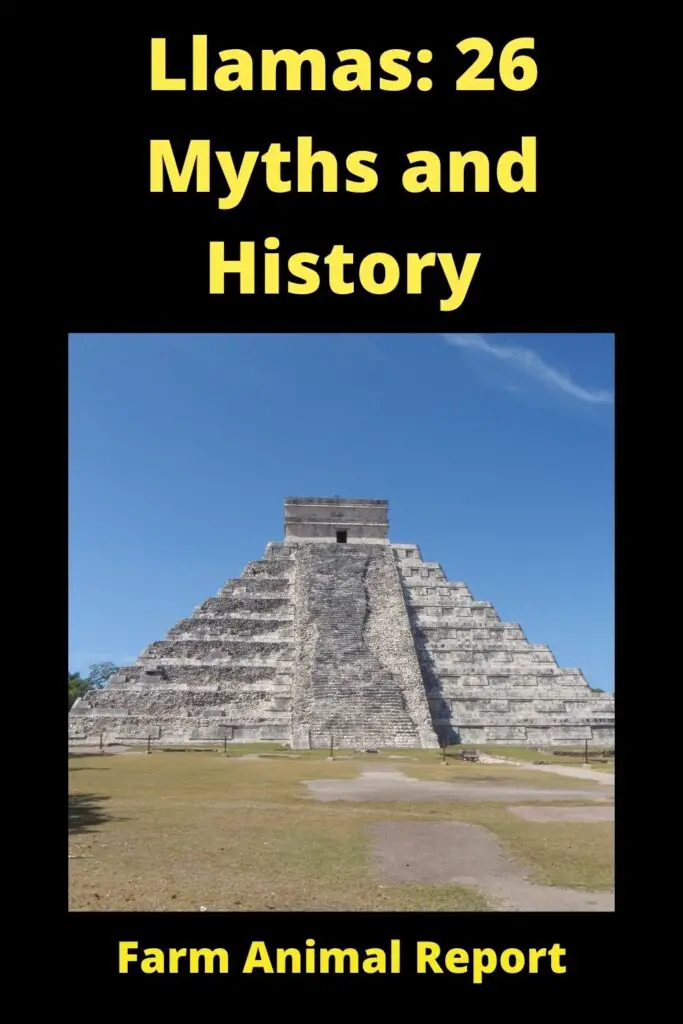
12) “Pachayachachic” which can be translated as “old priest.”
-This god was in charge of making sure that llama sacrifices happened correctly. This is because people believed that they could not sacrifice an animal unless it was perfect, otherwise their crops would fail!
-People also associated this god with the harvest since he was in charge of making sure these ceremonies were done properly.
13) “Punchao” which means “solar disc or sun”.
-People associated llamas with the sun god because they believed that llamas were a sign of fertility and strength.
14) “Mascaypacha” which means “nest or uterus”.
-This is another name for Punchao since people thought he lived in the sky like an egg, hence why it was called his nest!
15) “Pachacamac” which means “world creator.”
-People associated llamas with this god because they believed that llamas were a sign of fertility and strength. They also thought that these animals could help Pacha create other things!
16) “Urcuchillay” which can be translated as “Lord of the Cinchilada”.
-This god was associated with llamas because people believed that they were a sign of fertility and strength. People also thought that he used them as sacrifices in order to create lightning storms so that their crops would not be destroyed by these weather conditions!
17) “Llamercachiy” which means “guardian.”
-People associated this god with llamas because they believed that he was in charge of protecting them and making sure that their sacrifices happened correctly!
18) “Catequil” which means “lightning bolt.”
-People also associated this god with llamas, since they were a sign of lightning for these people. They would sacrifice them in order to make sure that there was no weather damage to their crops.
19) “Cuchaviva” which means “divider of the dead.”
-People associated llamas with Cuchaviva because they believed that he would help people divide up their belongings since llamas items were considered valuable!
20) “Chuqui Illa” which means “shining llama”.
-This god was associated with llamas because people believed that they were a sign of fertility and strength. People also thought he used these animals as sacrifices in order to create lightning storms so their crops would not be destroyed!
21) “Pachayachi”, which can be translated into “he who gives fertility and strength.”
-People associated llamas with this god because they believed that llamas were a sign of these qualities!
22) “Llallagua” which means “sacrifice place”.
-This is another name for Urcuchillay since people thought he was the one using sacrifices to create lightning storms.
23) “Pacha Mama” which means “mother Earth”.
-People associated llamas with Pachamama because they believed that these animals were a sign of fertility and strength, hence why people would sacrifice them in order to protect their crops from being destroyed by weather conditions!
24) “Llamp’u”, which can be translated into “white llama.”
-This is another name for Pachacamac since people believed that he was in charge of creating llamas.
25) “Llaucan” which means “valley.”
-People associated this god with llamas because they thought both were a sign of fertility and strength! They also believed that the animals could help him create things.
26) “Taypicala” which means “the one who works”.
-People associated llamas with this god because they thought that both were a sign of fertility and strength. They also believed that he used them as sacrifices in order to create lightning storms so their crops would not be destroyed by these weather conditions!
History of Alpacas / Llamas Name
1) Alpaca is derivative Spanish ” el Paco”
2) Llamas in Spanish translated ” What is Called?” – Spaniards
3) Male Alpacas called – Machos
4) Female Aplacas called – Hembras
5) Hybrids ( cross of Llama / Alpaca – Huarizo – Paco – Vicuna – llamo vicuna – llamo guanaco – paco guanaco
Physical Myths Surrounding LLamas
Final Thoughts
The Myths in History concerning the Llama in the Inca Empire are rich and abundant. This article has just scratched the surface on this topic and hopefully, it will allow you to view these animals in a new light!


